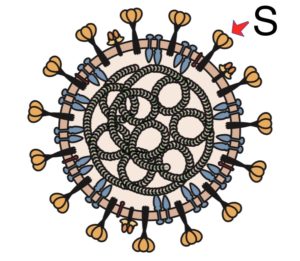

Results on efficacy of the first of the SARS-CoV-2 candidate vaccines has been announced by Pfizer this week. The company states that the viral spike-encoding mRNA vaccine candidate was found to be more than 90% effective in preventing COVID-19. This announcement is good news, but in itself does not signal the end of the pandemic.
What does 90% efficacy mean? The term ‘efficacy’ is used when a study is carried out under ideal conditions, for example, during a clinical trial. Vaccine effectiveness is used when a study is carried out under typical field (that is, less than perfectly controlled) conditions.
Vaccine efficacy is calculated by comparing the percent reduction in cases in the vaccine arm of the trial versus the control arm. The following formula is used:
Percent of infected in control group €“ percent of infected in vaccinated group / percent of infected in control group
Pfizer announced that they had 94 infections in both the vaccine and control arms of the study. We can back-calculate to determine the number in each group. Pfizer has indicated that 38,955 individuals have received two doses of vaccine and 6,583 are in the control group. Working back from those numbers, I calculate 60 infections in the control group and 34 infections in the vaccine group. These numbers were used in the formula shown above to calculate ~90% vaccine efficacy.
Ninety percent vaccine efficacy is certainly encouraging: it could have been less than 50% which is not a good outcome. Although the trial is not yet over, the FDA has already stated that it will not approve a vaccine of less than 50% efficacy. As more infections are recorded in the vaccine and control arms, I expect the efficacy to decrease but will likely remain above 50%.
An important question is what kind of COVID-19 is prevented by the vaccine. Michael Osterholm put this issue very clearly: €œFor a vaccine to really have maximal impact, it’s going to have to also reduce severe illness and death.€ We don’t yet know if this vaccine prevents severe COVID-19.
Another issue is how the vaccine will be distributed. This mRNA vaccine requires storage at very low temperatures, -70 degrees centigrade. Freezers that maintain this low temperatures are not common. While Pfizer has indicated that it will ship the vaccine on dry ice, it is not clear how it will be stored in the final destinations.
A key question is how long the vaccine will confer protection against disease: 3 months, 6 months, 12 months, or longer? It the duration of immunity is short, it may be necessary to administer yearly boosters.
Finally, there is the issue of doses: the company can make up to 50 million doses in 2020. That will increase to 1.3 billion doses in 2021, but neither is enough to immunize most of the world. Clearly we need vaccine candidates being developed by other companies to perform well.
Expect Moderna to announce interim phase 3 vaccine trial results in the coming week. Also an mRNA vaccine, it is likely to perform as well as the Pfizer vaccine, with the same considerations discussed above. But two vaccines to prevent COVID-19 will not be enough to protect all humans. Fortunately, other vaccine candidates are in advanced phases of testing. Just don’t expect everyone to be immunized until at least 2022.

Comments are closed.